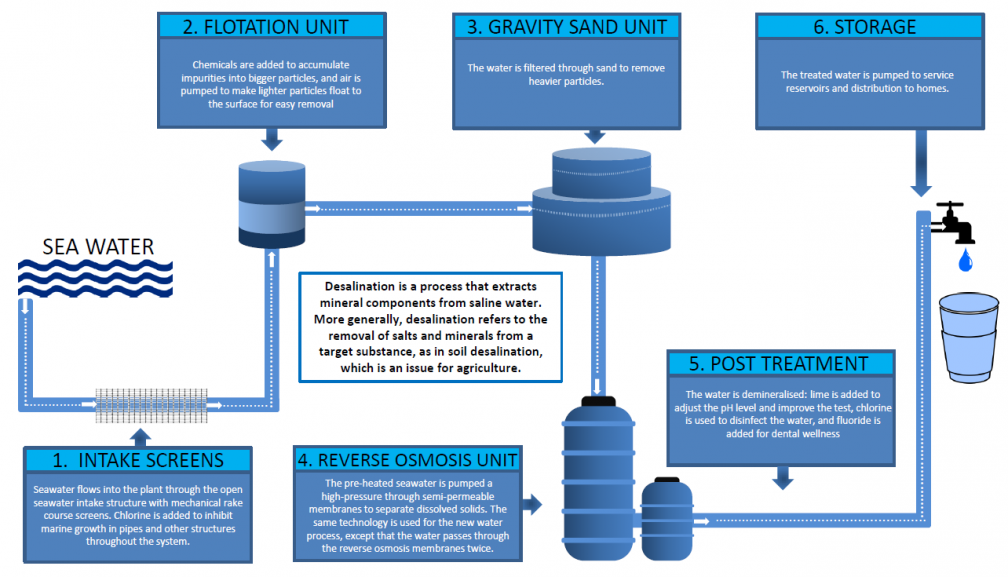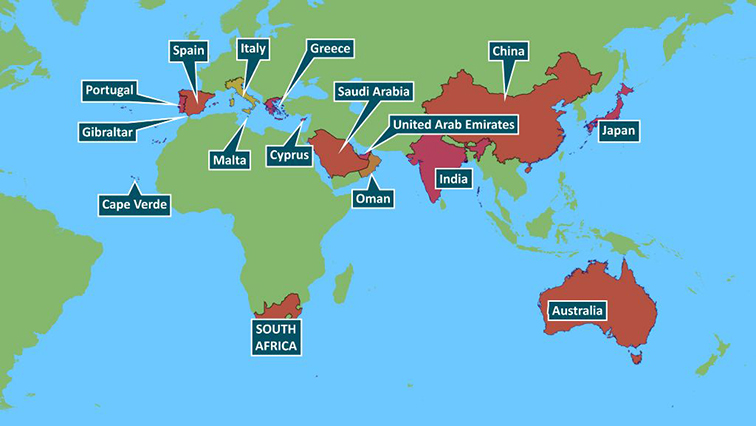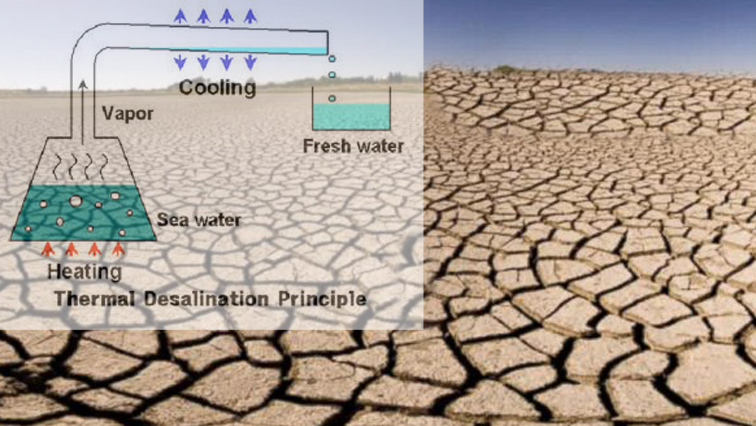South Africa is on a race to build desalination plants to combat the water crisis it faces as dams run dry and rainfall figures are on the decline.
Desalination has been proven to be an expensive but effective way of obtaining water using sea water.
The building of desalination plants take a long time and is very expensive, however they have the potential to reap huge rewards in the long run.
The process of desalination involves the removal of salt from sea water, it refers to the removal of salts and minerals from a target substance.

Though desalination has many advantages, it has been proven to have a negative impact on the environment.
The emissions created by desalination plants contribute to climate change, which is a leading factor of the droughts and water shortages.
Desalination turns water into a high commodity, as private companies have been seen investing in desalination plants because it is a leading growth area in the global water market.
All large coastal seawater desalination plants discharge brine into oceans.
Despite these alarming cons, desalination remains the best option to access clean, reliable drinking water as seawater is free and most of the world’s freshwater resources are drying up.
Approximately 1% of the world’s population is dependent on desalinated water to meet daily needs, and the United Nations says its expects 14% of the world’s population will have water scarcity by the year 2025.
This could increase the number of people who rely on desalinated water.
Here is a map of counties currently using desalinated water:

As the Western Cape grapples the worst drought in the provinces’ history, it has also looked to the process of desalination to help combat its woes.
The City of Cape Town has started numerous water expansion projects. It’s started construction of a desalination plant located at Strandfontein Pavilion which will be one of three plants around the city.
The others are in Monwabisi Beach as well as at the V&A Waterfront. The Strandfontein plant is expected to produce two million litres of water a day by the end of March.
As dams, rivers and streams run dry and rain fast becoming scarce, coastal cities will look at desalination to get water. Leading specialist in the desalination and water treatment field is Veolia Water Technology South Africa. Chris Braybrooke, the general marketing manager of Veolia, says the construction and production of a desalination plants costs millions of rands.
Click below to listen:






